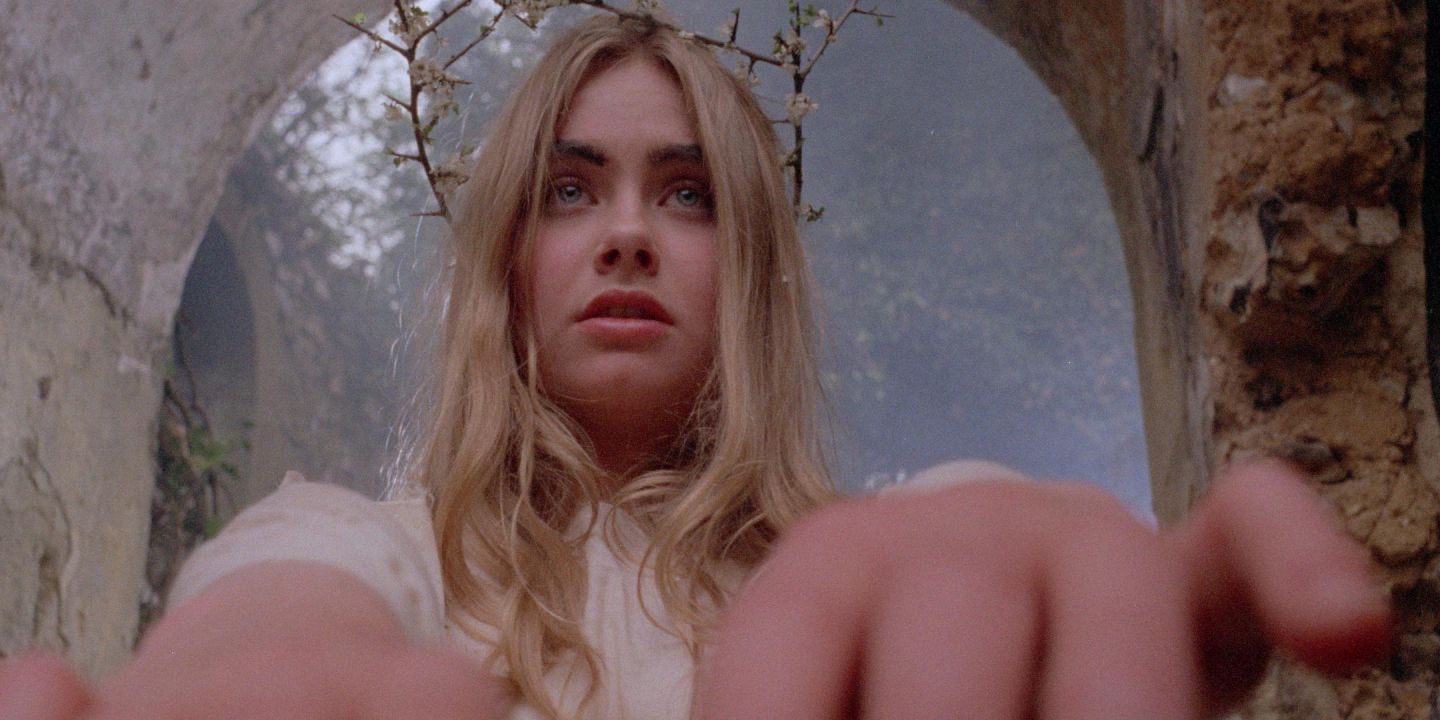Running for more than three hours, overflowing with film clips, and populated by truly insightful experts, Woodlands Dark and Days Bewitched: A History of Folk Horror is a cinematic graduate-level course––in the best sense. Written, produced, and directed with stylistic verve by Kier-La Janisse, the documentary is a staggeringly immersive experience, all somber music, eerie singing, and unsettling, often gruesome imagery. It is also a creation that inspires the viewer to dive even further into the world of “folk horror.” Tracking down and watching the films highlighted here would be difficult, if not impossible, but that search is part of the fun. Make no mistake: folk horror is fun.
As Woodlands begins, Janisse’s stellar experts explain, in voiceover, what it means to be considered “folk horror.” This array of words forms a strange and enticing tapestry, from “The juxtaposition of the prosaic and the uncanny” to “The Devil having a cup of tea with you” to “Someone heading to a village just outside of town and discovering a pagan conspiracy” and beyond. It may be a lot, but hearing these explanations over oodles of mesmerizing clips makes complete sense. “Folk horror ultimately asks,” the film theorizes, “what if the old ways were right?” This, specifically, is a theme of Robin Hardy’s The Wicker Man, the 1973 classic that is said to make up “The Unholy Trinity” of folk horror alongside Michael Reeves’ Witchfinder General and Piers Haggard’s Blood on Satan’s Claw. Witchfinder, a 1968 horror film starring Vincent Price, is a tale of witch-hunting during the English Civil War, while Satan’s Claw is an ultra-eerie 1971 wonder exploring possession in 1700s England.
Janisse has brilliantly chosen to start her study with these three. The clips are positively mesmerizing, all the more so because for many of us, only The Wicker Man is known by heart. Taken together, the films touch on many of the tenets of folk horror: unchecked power, a sense of nihilism, the danger of the countryside, the fear of female sexuality, the idea of aristocratic corruption. Above all, the three films are about belief––something that is essential in folk horror.
From here, Janisse moves into the “signposts” of British folk horror, among these a BBC adaptation of M.R. James’ “Whistle and I’ll Come to You,” a black-and-white film that, on the basis of the clips featured here, is positively terrifying. (It also seems to be an influence on a recent film that could qualify as American folk horror: David Prior’s The Empty Man). For many viewers, these works are delightfully obscure, but they are so compelling that one could easily fall down a post-Woodlands rabbit hole. While clips of films made before, say, the 1980s are most impactful, a number of recent entries are also included: A Field in England, The Witch, Hereditary, the “urban myths” of Candyman, even The Skeleton Key.
The latter three films are highlighted during the second and third hours of Woodlands. During these sections, Janisse moves into studies of American folk horror and horror around the world. There is no question, however, that the first hour of Woodlands is more compelling than the two that follow. This is not to say Janisse’s look into American folk horror, southern Gothic, and folk horror from overseas do not intrigue. Rather, the documentary’s format and approach simply loses some of its oomph and begins to grow a bit exhausting. Woodlands may have proven more effective as a three-part (or more) series rather than a single 194-minute film.
Woodlands Dark and Days Bewitched: A History of Folk Horror remains a massive, tremendously involving film that is as bold, painstakingly compiled, and lovingly crafted as the “key texts” that it spotlights. The ending, when it comes, feels rather jagged and sudden. However, it is also appropriate. Janisse understands that folk horror is not finished. As long as the tension between the “old ways” of the past and the advancements of the present exist, there will be new explorations of collective storytelling. While Woodlands is certainly the most complete cinematic analysis on folk horror’s history ever created, it is by no means the last word.
Woodlands Dark and Days Bewitched: A History of Folk Horror screened at Fantasia International Film Festival.

